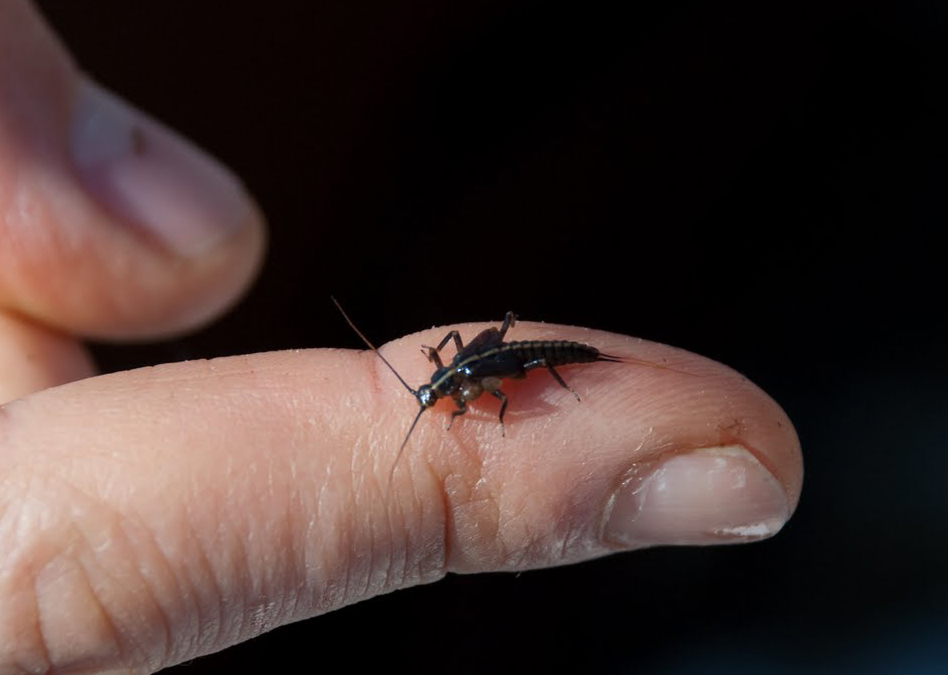
The January 29 Stonefly Search revealed that two of our study sites on the north branch of Mill Creek, near Chelsea, were missing stoneflies for the first time since monitoring began in the mid-1990’s (Read more in this blog).
As a result, HRWC sent additional teams of volunteers to look more closely at these locations. At the Fletcher Road study site, the follow-up team was able to locate the broadback winter stonefly. They reported that the abundance of the insect was low, so it is possible that the original team did not find it because of time constraints. Our normal Stonefly Search parameters are for the volunteers to only look for 15-20 minutes. For the follow-up visits, the time constraint was removed since our goal was to carry out a concentrated search of these locations.
At the Ivey Road study site, 2 volunteers spent over an hour in the water and not only did they fail to find stoneflies, they only found three living creatures (1 caddisfly, 1 worm, and 1 dragonfly). This is a tremendously poor insect population for a stream that historically was very diverse and abundant, and it tells us that something unusual has happened to either the habitat or the water quality on this section of Mill Creek.
In order to determine the extent of the problem, our volunteer team traveled upstream and sampled the next two stream/road intersections as well. While once again they failed to find stoneflies, our team did locate an abundant mayfly population, indicating that the water quality problem is likely limited to the stream section around Ivey Road.
With the current level of snow and ice on the creek, it is difficult to do more testing at this time. When the weather warms up, we shall return to the creek in order to get a better look and search for specific causes to the problem. We also alerted the proper authorities about the issue. We will report of any other future discoveries or actions on this blog.



